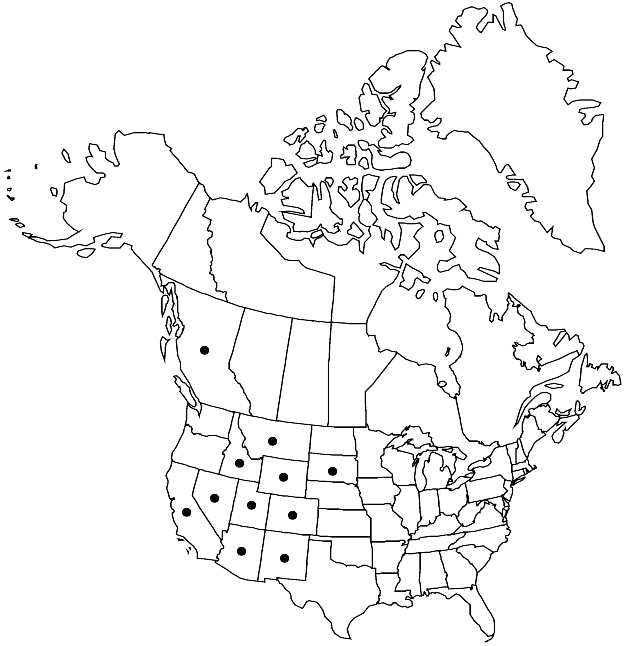Difference between revisions of "Orthotrichum hallii"
in W. S. Sullivant, Icon. Musc., suppl., 63, plate 45. 1874.
FNA>Volume Importer |
FNA>Volume Importer |
(No difference)
| |
Revision as of 22:04, 16 December 2019
Plants to 2.5 cm. Stems erect; leaves similar on vegetative and fertile stems. Stem leaves loosely erect-appressed when dry, elongate-lanceolate to lanceolate, 1.7–3.5 mm; margins revolute proximally, recurved to almost plane near apex, entire; apex ± narrowly obtuse, rarely bluntly acute; basal laminal cells rectangular to short-rectangular, grading to quadrate at margins, walls thin, not nodose; distal cells 7–13 µm, 2-stratose, rarely with few 1-stratose areas, papillae 1–3 per cell, conic, small; marginal cells mostly to completely 2-stratose. Specialized asexual reproduction absent. Sexual condition gonioautoicous. Seta 0.5–1 mm. Capsule 1/2 emergent when dry, immersed when moist, oblong or oblong-ovate, 1–1.8 mm, strongly 8-ribbed to mid capsule or entire length, rarely with 8 very short intermediate ribs, sometimes constricted below mouth when dry; stomata immersed; peristome double; prostome present, occasionally rudimentary; exostome teeth 8, sometimes irregularly split to 16, incurved becoming spreading or rarely reflexed when old, coarsely striate-reticulate or striate-papillose; endostome segments 8, not well developed, of 1 row of cells, short, finely longitudinally striate. Calyptra oblong, smooth, sparsely hairy, hairs papillose. Spores 10–17 µm.
Habitat: Rock, usually limestone or calcareous sandstone, granite, quartzite, basalt, trunks of deciduous trees, open pine forests, spruce-fir forests, deciduous scrub oak-maple forests, vertical canyon walls, shaded cliff faces
Elevation: moderate to high elevations (200-3000 m)
Distribution

B.C., Ariz., Calif., Colo., Idaho, Mont., Nev., N.Mex., S.Dak., Utah, Wyo.
Discussion
Orthotrichum hallii is distinguished by leaves that are completely or nearly 2-stratose in their distal portion, and emergent, oblong, 8-ribbed capsules. The peristome teeth vary from ridged-striate to papillose-striate; the proximal portions of the teeth are often coarsely papillose with the distal portions having striae mixed with papillae, and the papillae are always small and conic.
Selected References
None.